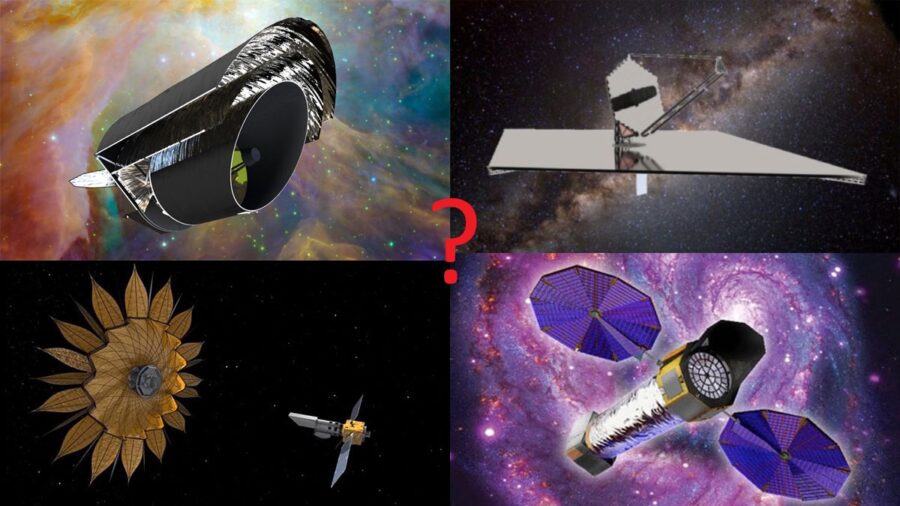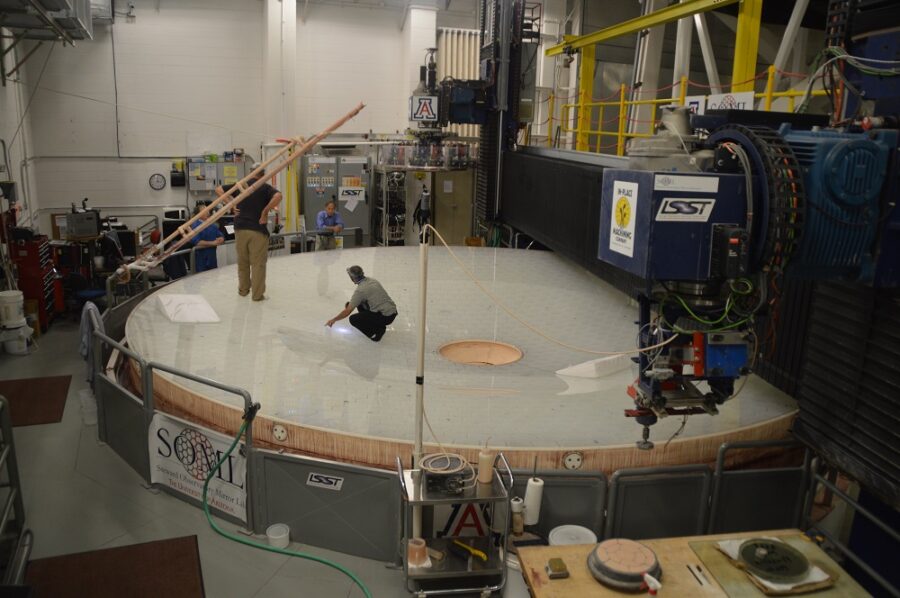The National Academy of Science outlined the current and future directions for astronomy and astrophysics.
From idea to design to launch, iconic space telescopes go through a protracted process. Every ten years, the space and astronomy communities meet to make suggestions for the equipment and infrastructure that will be required to continue pushing the bounds of discovery. The result, dubbed the Decadal Survey for Astronomy and Astrophysics, is significant for the scientific community since it establishes the direction for the next decade and beyond.
The National Academies of Sciences, Engineering, and Medicine delivered the long-awaited 614-page report on Thursday, November 4th. The study, titled “Pathways to Discovery in Astronomy and Astrophysics for the 2020s” (called Astro2020 in more casual contexts), was based on suggestions from 867 white papers, many public information gathering workshops, and 13 expert panels.
The report’s proposal that NASA explore creation of a 6-meter space telescope that can see in infrared, visible, and ultraviolet light will undoubtedly attract the greatest attention. This indicates that visible light won out over X-ray and far-infrared observatories as the top priority among the flagship mission proposals. These, however, remain on the list; they will simply have to wait longer for development.
Grant Tremblay (Center for Astrophysics, Harvard & Smithsonian), a member of the Lynx mission concept proposal, states, “This is a visionary road map for the future of discovery.” “I am ecstatic that the group has demonstrated a feasible and maximally ambitious path for a new constellation of Great Observatories.”
“As part of the Great Observatories Technology & Mission Maturation Program, we are pleased that the vision of Lynx will begin on a path toward flight,” he adds. “We are dedicated to the success of this voyage, with our friends and colleagues on the LUVOIR, HabEx, and Origins mission ideas. The New Great Observatories are ready to solve the greatest questions that lie ahead of us on the first day of an altogether new period of discovery.”
Artist’s concepts of four possible future missions (clockwise from upper left) Origins, LUVOIR, Lynx, and HabEx.,NASA
This survey included a panel focusing on people rather than infrastructure, which was a first for decadals. As a result, there is a desire for more investment in worker diversity, as well as measures to address harassment, discrimination, and misconduct. The racial diversity among astronomy professors is described as “abysmal” in the study. The percentages have stayed fairly stable since the 1980 decadal study exposed the problem: now, 1% of professors are African American, and 3% are Hispanic. To remedy this, the paper suggests increasing funding incentives for astrophysics and astronomy faculty diversity.
It’s worth noting that because of the COVID-imposed delay, the recommendations in this report will likely miss the Senate reconciliation measure now on the floor, and they may not appear in the President’s FY 2023 budget proposal. As a result, the suggestions in the study begin in 2023.
GOALS IN SCIENCE FOR THE NEXT DECADE
The survey’s scientific vision is divided into three main areas targeted at allowing significant astronomy and astrophysics discoveries:
- Worlds and Suns in Context will add to our knowledge of exoplanet research by describing planetary systems surrounding other stars and seeking for Earth-like planets. The study emphasizes photographing and acquiring spectra from possibly habitable exoplanets to achieve this goal.
- New Messengers and New Physics will investigate the nature of inflation, dark energy, and dark matter by combining time-domain data with multi-messenger observations (electromagnetic spectrum, gravitational waves, and particle physics). Astronomers will get new perspectives on exotic sources like as black holes, neutron stars, and explosive merger events by merging multi-messenger studies.
- Cosmic Ecosystems will try to link working models of star formation and galaxy evolution with particular processes in order to figure out their past and future. The main objective is to learn more about how galaxies expand by studying how gas drives star formation and, as a result, galactic evolution.
The report gave a proposed timeline for astronomy projects through mid-century.
National Academies of Sciences / Astro2020 Decadal Survey
NOW FOR THE WINNER…
Unlike prior surveys, Astro2020 proposes the creation of a “Great Observatories Mission and Technology Maturation Program.” Before committing to particular mission ideas, this program would direct the development of critical technologies and missions. The meandering pathways of missions like the James Webb Space Telescope, which is due to launch in December after more than a decade of delays, demonstrate how complicated the process can be.
A big, 6-meter (20-foot) aperture telescope capable of imaging in infrared, visible, and ultraviolet light will be the first item on the wishlist — and the first to join the maturation program. This decision focuses on the science of exoplanets, essentially compromising between two flagship ideas that were submitted to the decadal: the 4-meter HabEx proposal and LUVOIR, which was offered in 8-meter and 15-meter configurations. With a launch in the early 2040s, the cost of this flagship mission would be $11 billion for the first five years of operation.
The following objects on the wish list are X-ray and far-infrared observatories, which would replace Chandra and Herschel, respectively. These observatories correlate to the Lynx and Origins mission ideas, which have a $3–5 billion budget recommendation.
GROUND-BASED ASTRONOMY
In terms of ground-based observatories, the report gives high priority to both the Giant Magellan Telescope (GMT) and the Thirty-Meter Telescope (TMT), which it recommends join forces as the Extremely Large Telescope (ELT) project. Curiously, though the report cites both telescopes as essential, it also mentions that the success of the ELT program hinges on the completion of “at least one” of these telescopes. The GMT will be based in Chile, and the TMT will be built on either Mauna Kea, Hawai’i, or on La Palma, Spain.
The NSF and DOE will also pursue a project known as Cosmic Microwave Background Stage 4. This observatory will carry out a 7-year sky survey from the South Pole in the 30-270 GHz range in tandem with all-sky surveys carried out from the Atacama desert in Chile, to characterize the cosmic microwave background, the afterglow remnant that still shines from 380,000 years after the Big Bang.
The report also cites the need for a next-generation Very Large Array (ngVLA) for radio astronomy, though it mentions that at this point, the project is “immature in its development.” The 263-dish array, which will spread across North America, will not break ground until about 2030.
LIGO’s two facilities: LIGO Livingston in Louisiana, and LIGO Hanford in Washington State. Dave Dickinson
The study suggests that funding for the Laser Interferometer Gravitational-Wave Observatory (LIGO) be maintained, as well as plans for a next-generation facility. As part of the multi-messenger concept, the report calls for more research into high-energy neutrinos. To this end, the IceCube-Generation 2 Neutrino Observatory in Antarctica would replace Ice Cube, allowing it to resolve discrete sources and detect neutrinos at higher energies.
NASA’s top aim is to use space to capture transitory occurrences of all types in real time, which necessitates simultaneous detections of phenomena across various wavelengths, as well as through neutrinos and gravity waves. To that aim, the paper suggests that the agency pursue one “probe” mission each decade, with a $1.5 billion budget ceiling, to bridge the gap between smaller “explorer” missions and massive flagships.
The study also calls for more financing for the National Science Foundation to maintain the foundations for future astronomical research, covering everything from early-career scientist support to data preservation. To that end, the paper suggests that the National Science Foundation (NSF) support an additional $16.5 million in individual researcher grants by 2028 (a 30 percent increase).
Of course, as a consequence of the survey, certain cutbacks and considerations will be implemented: The SOFIA flying infrared observatory is one such example; NASA has said that it would stop operations by 2023, and the study supports that decision.
Finally, according to the decadal survey, the rise of satellite megaconstellations, such as SpaceX’s Starlink, will not only exponentially increase the number of objects in low-Earth orbit, but will also severely impact and degrade the capabilities of all-sky surveys unless regulations are put in place.
The mirror for the Vera C. Rubin telescope (then known as the LSST) in the Mirror Lab at the University of Arizona in Tucson. Dave Dickinson
This report, the seventh in a series of decadal surveys that have guided the development of NASA’s Great Observatories, provides a unique snapshot and vision of the field’s future, not only in terms of its exciting potential for discoveries, but also in terms of the backdrop of societal and cultural change in which exploration of the cosmos takes place.





